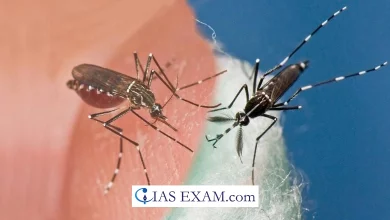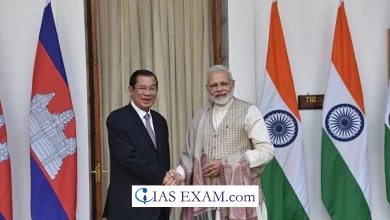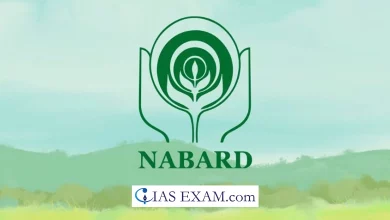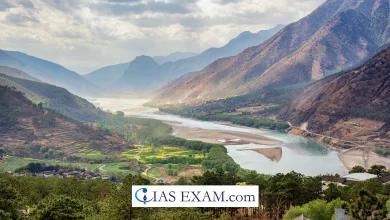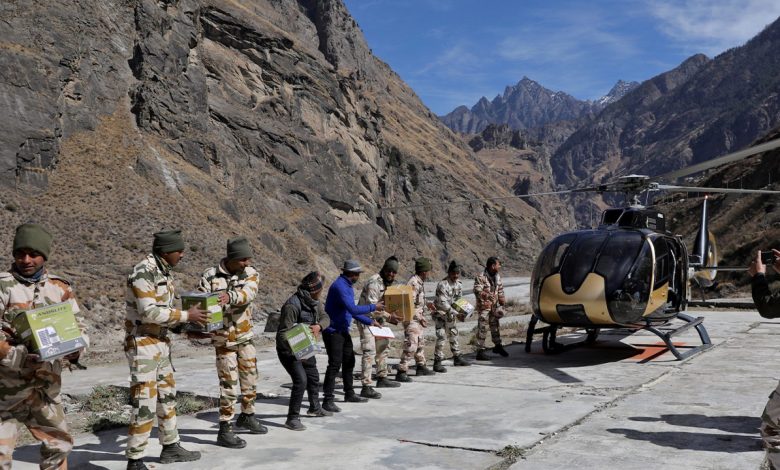
Context- Recently, India dispatched Indian Air Force (IAF) C-17 Globemaster transport aircraft with relief material, a 30-bed field hospital, and rescue and medical personnel to Turkey as part of its Humanitarian And Disaster Relief (HADR) efforts in order to assist earthquake-hit Turkey and Syria.
India’s Disaster Relief Diplomacy
- India deploys its humanitarian aid mainly through bilateral and multilateral channels.
- India’s humanitarian assistance is listed as one of the forms of development support which the country extends to its partner countries across the world.
- The assistance has included support in response to natural disasters, during long-term complex emergencies, and support provided in post-conflict, post-disaster, and pandemic situations.
- India developed a ‘SAARC COVID-19 Information Exchange Platform (COINEX)’ platform for use by all SAARC countries in order to facilitate exchange of specialized information and tools on COVID-19 among designated health professionals.
- With the onset of time, India’s practice of disaster diplomacy has come to form a primary facet of its Neighbourhood First policy.
Determinants
- The ethos of India’s humanitarian assistance can be traced to the cultural and spiritual values.
- All the major religions including Hinduism, Christianity, Buddhism, and Islam – espouse solidarity with the suffering.
- The government acknowledges the significance of the UN’s four fundamental humanitarian principles of humanity, neutrality, impartiality and independence.
- India is a signatory to all four Geneva Conventions and participated in the 2016 World Humanitarian Summit.
- The South-South Cooperation(SSC)’s foreign policy principle informs and prompts India’s humanitarian actions, with India often seeking to respond in accordance with the expressed needs of recipient country governments.
Previous instances of India sending aid to natural disaster-hit countries
- The United States of America:
- Indian Air Force IL-76 aircraft delivered 25 tonnes of relief supplies for the Hurricane Katrina victims at the Little Rock Air Force Base, Arkansas in 2005.
- The relief supplies comprised 3,000 blankets, bed sheets, tarpaulins and personal hygiene things.
- Maldives:
- After the 2004 Tsunami, the Indian government announced a composite package of five crore rupees.
- Under “Operation Castor”, 50 sorties were undertaken and four aircraft and two Naval ships were engaged in relief operations.
- Sri Lanka:
- India sent its forces to carry out rescue operations, called “Operation Rainbow”, in Sri Lanka when the Tsunami struck the country in 2004.
- Myanmar:
- When cyclone Nargis hit Myanmar in 2008 killing at least 20,000 people, India was among the first countries to send aid.
- It gave 125.5 tonnes of relief material, such as medicines, clothing, utensils, water tanks, tents and tarpaulin.
- Japan:
- The 2011 Tsunami wreaked havoc in Japan. Apart from providing relief materials, India sent 46 members of the National Disaster Response Force (NDRF) in order to search and rescue in the town of Onagawa.
- The team included a doctor, three officers, six inspectors, two paramedics and constables and it carried 9,000 kg of equipment and food.
- Nepal:
- In the aftermath of the 2015 Nepal earthquakes, the NDRF deployed 16 of its urban search and rescue (USAR) teams, that comprised more than 700 rescuers in the country.
- The teams organised six medical camps and attended to 1,219 persons.
- India’s humanitarian assistance mainly flows through bilateral channels.
- However, the Indian government has also engaged with multilateral platforms.
- A recent collaboration with Australia (as part of the Quadrilateral Security Dialogue group, QSD or Quad) while providing assistance to the Kingdom of Tonga is an instance of such an initiative.
- India has been working with UN agencies such as the World Food Programme (WFP) and the United Nations Office for the Coordination of Humanitarian Affairs (UNOCHA) to deliver food and other humanitarian support over the past two decades.
- Similarly, with the help of the WFP, India managed to deliver wheat to Afghanistan in March 2022.
- India launched relief operations for neighbouring countries such as Operation Castor in Maldives, and Operation ‘Gambhir’ in Indonesia
- In 2007, in the aftermath of Cyclone Sidr that hit Bangladesh, Operation ‘Sahayata’ was launched by India.
- India offered help to Pakistan after the 2010 earthquake.
- Samudra Maitri was an operation which helped Indonesians during the October 2018 earthquake and tsunami
Importance
- Disaster assistance becomes an instrument for maintaining and fostering friendly relations with other nations.
- This is a way to earn the goodwill of foreign governments and the local people by promoting a positive image of the helping nation
- Given its quest for becoming a regional power and securing a permanent seat in the United Nations Security Council, India is increasingly eager to portray itself as a provider of development assistance.
- Disaster Diplomacy is filled with possibilities for the future and India has the potential to become the region’s Good Samaritan – a power which the extended neighbourhood looks to for help.
Challenges and Constraints
- India has performed well in terms of assistance, but the timing of these relief efforts still remains a grey area.
- Often relief efforts reach affected people long after disasters strike leading to the massive destruction of life and property.
- Also sometimes India failed to project itself as an aid giver in the global media.
- It has been observed that the Indian armed forces face several challenges related to preparedness for disaster response and recovery.
Conclusion
- It is crucial that special budgetary allocations be made for disaster management-related expenditures.
- Apart from it, emerging forums like the Quad should be utilized for humanitarian assistance and disaster relief.
- This will bolster India’s image as a growing power, with the capability in administering operations outside its borders
- There is also a need to increase in capacity – stockpile reserves, trained personnel, and procedures – along with a coordinated effort with other countries and the United Nations to fulfill the tenets of Vasudhaiva Kudumbkam.





.png)
